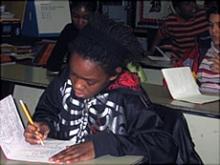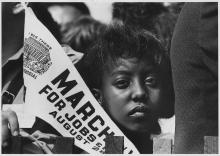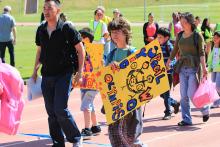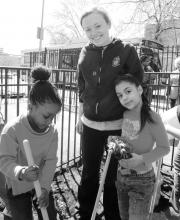To reflect on what students learned from this philanthropy class and to gather their feedback on the class experience.
Filter by subjects:
Filter by grades:
Filter by audience:
Filter by issue area:
Filter by content type:
Filter by resource type:
resource search
Learn about the purpose of reflection and a variety of reflection techniques and questions. Engage the hearts and minds of volunteers and activists in order to increase the meaning of any service experience.
What is the relationship of the philanthropic nonprofit sector to democracy? We explore what schools teach about democratic citizenship, social contracts, and core democratic documents.
Learn about philanthropic elements of ancient civilizations and religions. Explore the philanthropy of major social movements in the history of the United States.
Here's one creative way to engage youth voice to take voluntary action for the common good -- teach them to use spoken word for the causes they care about. This mini-course provides background, examples, and tips for teaching spoken word poetry. Designed for facilitators, this mini-course is also accessible to youth.
This mini-course provides a brief overview of the purpose and features of the nonprofit sector. You will learn about the role that the sector plays in society, how and why people work or volunteer in the sector, issues within nonprofit organizations, and how to empower youth with participation in the nonprofit sector.
We are all connected in a global community, and the United Nations' Sustainable Development Goals (SDGs) call us to action to make a better future for everyone. In order to be successful in reaching these goals, all citizens need to be aware of what the issues are and ways to take action. In this mini-course, we introduce the 17 SDGs and explore ways to bring the goals to life with youth. We guide awareness about the current 17 goals with tools to research and decide which issue participants care about most.
This course provides an overview of strategies and the quality indicators of service-learning. Through stories, examples, and reflection questions, learners analyze what makes a service-learning experience meaningful.
Learners use visual literacy skills to analyze the components and message of an image. They listen carefully and seek to understand the different opinions and perspectives of their peers. They identify issues that are meaningful to them and create a simple image and text to communicate a...
This lesson focuses on eight levels of tzedakah (charity) that were identified by a great Jewish thinker known as Rabbi Moses Maimonides. Students will investigate various ways to give charity and gain an appreciation of how people give of their time, talent or treasure. They will...






